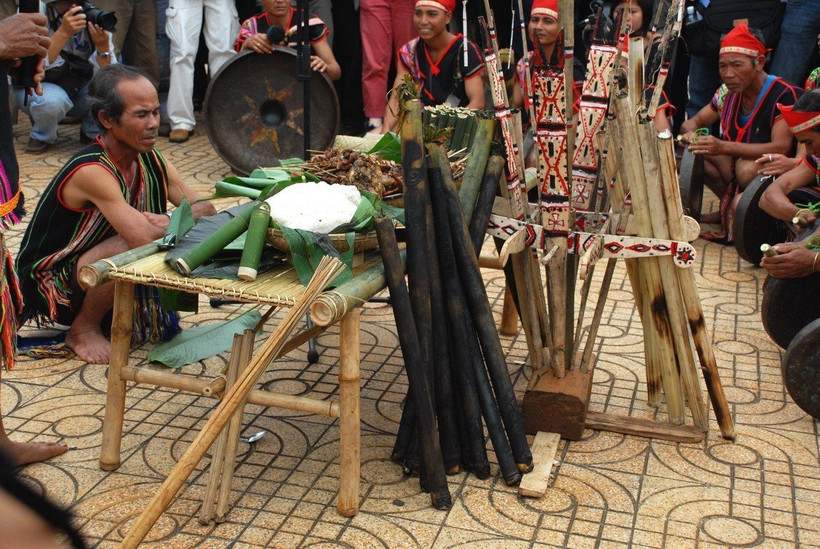The new rice festival is the first celebration of the year for the Xo Dang people in Vietnam's Central Highlands, steeped in ancestral rituals that honor the land, harvest, and spiritual guardians.
Rich with communal activities and ancient customs, the festival draws residents from nearby villages and visitors from across the country, eager to join in the joy.

Held annually after the autumn-winter upland rice harvest, the Xo Dang new rice festival is usually celebrated at the beginning of the Gregorian new year.
Due to deep-rooted spiritual beliefs, every ritual is conducted with utmost reverence, passed down through generations for hundreds of years.
Preparations begin with the village elder selecting an auspicious day. Families clean and refurbish their homes, especially stairs and visible areas, to welcome the spirit of the Rice God back from the fields without unfamiliarity.
Men are tasked with clearing headwater streams, repairing water sources, and erecting ceremonial poles, while women handle sacred household duties such as fetching water from the headspring and lighting ritual fires.
The celebration is marked by two main parts: family ceremonies and the communal ceremony at the village rong house.
Each family visits their ripe rice fields, performs sacred rites, and uses a fresh bamboo stick to mark spots for harvesting.
A portion of the harvest is then brought home to store and to offer in the house ceremony, where a large basket of rice is used for offerings.
Once all households have held their own new rice ceremonies, the village elder gathers the community to announce the grand celebration.
On the morning of the communal festival, every household locks its door and prepares food, water jars, and sticky rice to place above their kitchen hearths.
The village elder is the first to open his door and proceed to the rong house, beating the ceremonial drum to invite the villagers.
Key rituals at the rong house include fetching water from the communal source, sprinkling water around the rice granaries as a prayer for favorable weather and abundance, and presenting the season’s first cooked meal to Giang (the supreme deity), contributed by every household.
Following the offerings, the elder blesses the new rice by eating and drinking rice wine first, then invites everyone in the village to partake.
The elder then leads the community in visiting every household to extend blessings.
After the village tour, everyone returns to the rong house for the main festivities. The night bursts into life with traditional music, gong and chieng performances, communal drinking of rice wine, dancing, folk games, and storytelling that continue deep into the night.
The celebration reflects a profound sense of gratitude, unity, and joy for the harvest and the promise of a prosperous year ahead.
PV